
Bubble Bobble (Arcade)
Bubble Bobble
Platform: Arcade
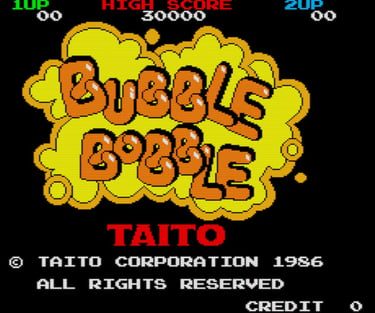

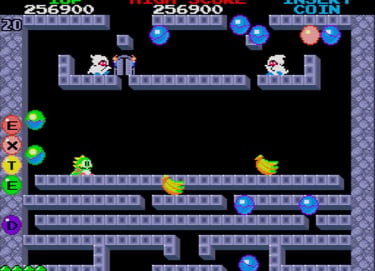

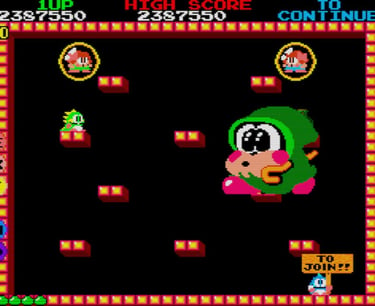

The single-screen platformer might owe its life to the likes of Donkey Kong, but it owes its legacy to Bubble Bobble, the 1986 Taito classic that all but unilaterally revived the already fading genre. Where earlier single-screen jaunts rarely transcended their high score trappings, Bubble Bobble became as much about the "quest" as it was the points. Bub and Bob, the game’s human-turned-dino heroes, have a family to rescue and curse to break, lest they remain bubble-puffing dragons forever. It’s a modest premise, but one no less epic than the princess-questing of Super Mario Bros. By '86, games had become not just tests of skill, but interactive adventures. Recognizing this, Taito used its new mascots to redefine the single-screen experience.
Of course, the company’s experimentation with the genre’s conventions had already begun a year earlier with The Fairyland Story, which features a comical quest of its own. Here, a plucky witch named Ptolemy must hop and blast magic through a hundred fantastical stages before confronting a terrible dragon at the end. The game was seminal, but too early—too prototypal—to capture a significant slice of the gamer zeitgeist. Bubble Bobble offered a second chance, switching the premise and polishing the proceedings to at last earn its audience. There’s a reason that, in the wake of so many forgotten mascots, Bub and Bob are still recognized in the present age.
Bubble Bobble is effectively infectious, a feeling reinforced in the game’s opening seconds by an incredibly endearing and always looping musical theme. Players, whether cooperatively or alone, must navigate a hundred stages of precarious platforming, spewing bubbles to trap the always roving foes. Once locked inside the sud, the baddie can then be “punctured” with a well-placed jump; popping multiple foes in one go yields a greater score. The early levels are initially fun, fluid, and disarmingly easy…before segueing slowly into increasingly esoteric level designs that both use and abuse the game’s quirky sense of physics. Indeed, Bub and Bob bear a certain “stiffness” in their jumps that, while merely an odd idiosyncrasy early on, will raise plenty of frustration by the final, most grueling stages.
In many ways, the game sports an almost rogue-like sensibility–at ultimate defeat, players are shown how far they fell in that inverted tower—how far down, and really, how far away they still are—encouraging the obsessive-compulsive to try again. And like any good rogue-like, random treasures and powerups are everywhere, offering slightly new experiences on every play. Beyond a cornucopia of score-boosting fruit, players can snatch candies to improve their bubble firing rate and range, grab different types of holy water to trigger bonus stages, find God-summoning crosses to cause screen-clearing cataclysms, and use magic parasols to skip certain stages. The game hides so many items, in fact, the casual player will never see them all.
Nor will they ever see the game’s ending.
For Bubble Bobble is hard, probably too hard; even those who reach and beat the game’s final (and only) boss will likely receive only the least of three possible endings, the best of which is so inscrutably difficult to find, let alone achieve, most will never find it.
Which is to say, the game is a sweet but brutal masterpiece, one that reshaped a genre but stopped short of outright resculpting it. It set the parameters, but not the destination. Future classics, from Snow Bros. to Rod-Land, would take the formula and formulate it further, offering alternate visions of what the genre could become. But without Taito’s trendsetter, there’d be no model, no reference or well-spring.
Bubble Bobble, indeed, helped reseed a fallow but ready field.--D
Publisher: Taito
Developer: Taito/Romstar
Release: 1986
Genre: Single-screen Platformer

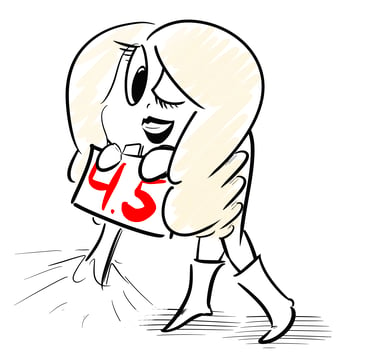
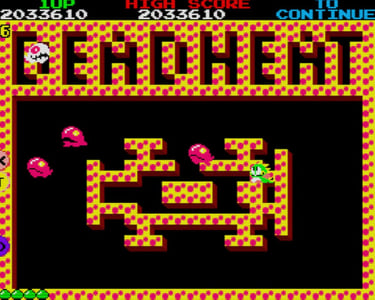

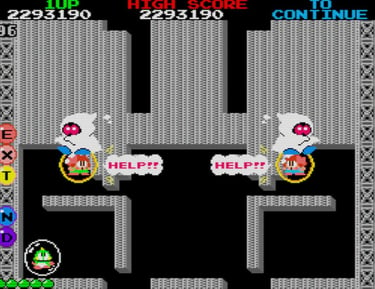

Jokes and references to other Taito games occasionally make appearances.
See the secret door? They're hard to find/unlock, but are crucial to achieving the game's best ending.


Betty and Patty, Bub and Bob's hapless gal pals, are regularly dangled across the screen--taunting the player onward. (And to spend more quarters.)
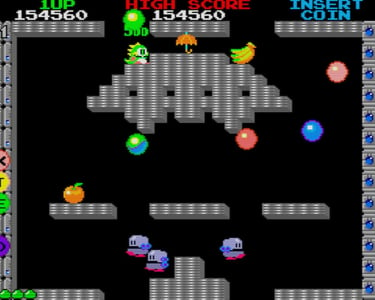

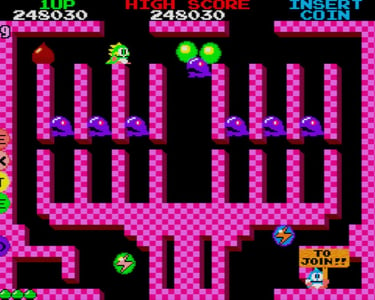

Levels get increasingly esoteric and awkward to navigate. Some are outright enigmas, forcing the player to deduce a solution within the dinos' limited move set.
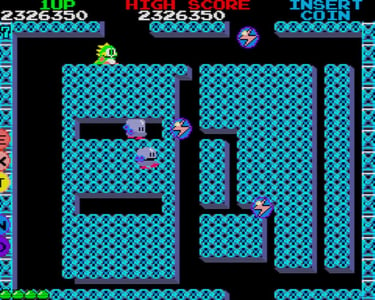

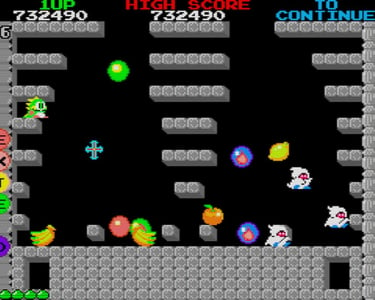

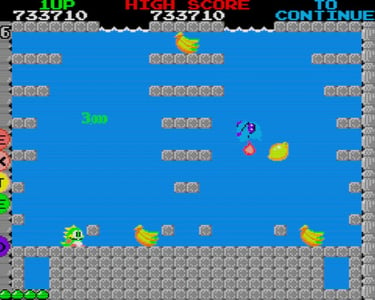

This particular cross, as seen above, beckons a holy flood. The game is rife with rare and inexplicable powers like these--so rare, casual players may never encounter them.
Contact: lostnostalgiaproductions@gmail.com
Website: www.lostnostalgia.com
Like what we're doing? Please consider throwing us a dollar into our Patreon page's tip jar!


